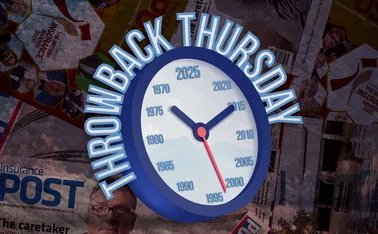
Analysis: Rate revision: changes to Ogden

Insurers consider the impact of the proposed U-turn on the Ogden rate
The Ministry of Justice’s Ogden discount rate U-turn, branded a “victory for common sense” by the Association of British Insurers, was broadly welcomed by an industry still reeling from the original cut to the rate in February.
If implemented today, the 0% to 1% discount rate would fall broadly in line with what two-thirds of insurers told Post they would prefer when the rate was cut in February.
However, many observers have noted that the draft legislation itself is not a silver bullet for the problems the original cut created, with some even warning there is uncertainty over whether the change will ever be made into law. Post explores what lies ahead for the industry.
Reinsurance rates
Under the draft legislation published last month, the rate will no longer be tied to index-linked gilts, but instead be set assuming that claimants will invest their compensation pay outs in a portfolio that involves more risk than a very low level of risk.
The Association of British Insurers’ director of general insurance policy James Dalton said that if implemented, this would help relieve the cost pressures on motor insurance, in a market that has seen year-on-year premium rises for three years straight.
Not least among insurers’ worries was the prospect of their reinsurance rates increasing by up to 80% with January renewals as a result of the original Ogden rate change, an expected cost burden now mitigated by the 7 September announcement.
Deloitte insurance partner, James Rakow, said: “Now we’ve had a partial reversal, I would expect that to temper the increases that insurers face on 1 January 2018.”
A recent Fitch report predicted that the “competitive nature of reinsurance” will drive down reinsurance rates, even if the new discount rate hasn’t been set by the renewal period.
Insurers are not so optimistic, however. LV managing director of general insurance Steve Treloar said: “A couple of weeks ago I would have said I expect rates to go up probably between 60% and 80% on a like-for-like basis. With the news that the government is considering changing the rate, that change might moderate slightly.
“But I would suggest that most reinsurers will remain cautious, and that they will not necessarily take allowance for Ogden changes until they are formally agreed by the government. Therefore, I remain broadly pessimistic about the outlook for reinsurance rates in the near term.”
Although the exact amount is under contention, there is no argument that insurers won’t now face lower costs than they would have expected had the consultation not been launched. Deloitte has predicted that a partial reversal of the additional reserving that was seen from insurers following the change to minus 0.75% could be in the range of £300m to £600m across the market.
The picture may remain bleak for reinsurers, however. PWC’s UK general insurance leader Mohammad Khan said: “September’s announcement will have quite a big impact on reinsurance rates.
“If the consultation hadn’t occurred, you would have seen rate rises of between 30% to 50% on insurers’ programmes. That’s now been put at risk.
“If you’re looking at renewal programmes now, there will be an increase but it won’t be an order of that magnitude. You might get 5% to 10%, or 10% to 15%, but reinsurers won’t get the technical rate that they need, especially because of price competition.”
Khan explained that reinsurers had not priced for the February change to minus 0.75% during their 1 January 2016 renewal period.
“Reinsurers at 1 January were being hit by increased claims but they hadn’t priced for them,” he said. “When it comes to this 1 January, although they’ll be able to increase prices slightly, they won’t be able to cover them by enough to cover that cost.”
Is it fair?
One of the arguments made by insurers during the consultation process was that the original methodology of tying the rate to index-linked gilts was flawed.
Branded a “patently ridiculous” formula by ABI director general Huw Evans, the industry argued that the 1998 Wells judgement’s definition of what differentiated a low risk claimant and a no risk claimant was altered with the introduction of periodic payment orders.
Furthermore, although there is ambiguity around how claimants actually invest their damages, insurers were confident that tying the rate to gilts did not accurately reflect real world investment strategies.
Mark Burton, partner and lead of Kennedy’s catastrophic injury team, believes a rate based on the new formula of between 0% and 1% would still be overcompensating claimants.
“The theoretical foundation has shifted from claimants investing in very low risk portfolios to low risk, but does that reflect investment reality?” he said.
“There’s still a really surprising lack of public evidence about how claimants invest their damages and what returns they’re achieving. The consultation spoke to some independent financial advisors and they privately made their submission to the Ministry of Justice, but there’s still virtually nothing in the public domain.
“Anecdotally, independent financial advisors have told me they’re confident of achieving 3% net from a cautious portfolio, or 5% net from a balanced portfolio. The MoJ has pegged the rate to 0% to 1% on an assumption of low risk, but in practice I suspect many claimants are doing rather better on different portfolios.
“We may still be overcompensating even at that level if the investment market is better than is reflected in the consultation.
“Some of the claimants who responded to the consultation admitted to taking lump sums because there was money left over to leave to families when they died. So they clearly were overcompensated.”
Ogden: in numbers
Higher layer reinsurance rates were originally estimated to rise by up to 400% before the consultation response
Partial reversal of additional reserving may amount to £300m to £600m across the market
Average reinsurance rates, which were originally expected to rise by 30% to 50% are now only expected to rise by 5% to 15%
February’s cut to the rate is estimated to have cost the industry in excess of £3.5bn
Sources: PWC, Deloitte and EY
Review period
Another issue for insurers following the February change was the step change involved in adapting to a new rate that hadn’t been altered in over a decade.
Andrew Gibbons, chairman of the British Insurance Brokers’ Association industry claims working group, said at a recent Post Claims Club that claims that were estimated prior to the February change had become massively inflated when the indemnity was beyond the date the change came into effect.
“The problem for policyholders is that mid-term they weren’t able to be advised whether they should consider higher limits of indemnity,” he said. “As a result, I know of cases where businesses are now facing bankruptcy because the Ogden rate shifted so much.
“For instance one firm had a limit of indemnity of £10m, the claim started at £8m, but ended up at £16m.”
As part of the new draft legislation, a review of the rate will occur within 90 days of the legislation being passed, after which it will be reviewed at least every three years.
Michael Tripp, head of financial services at Mazars, said: “The big issue was the enormous step-change. To go from 2.5% to minus 0.75% is the big issue, and now the government, under commercial pressure is responding with a not so well thought through solution.
“The three-year review period is better than 15 years, but it should be more frequent than that. As long as the rules are clear then the industry should cope.
“So long as there’s adaptation then the step-change in premium rates wouldn’t be what it has been. So for me, the three-year review period is too long. I would have gone for one year rather than three years.
“As long as it’s flagged and the rules are clear, people can cope with that.”
Burton believes the three-year review period is appropriate: “The three year review is a good thing. It was fairly random before, everyone was waiting for an announcement that didn’t come for over 10 years. The three years does provide certainty and should produce a more accurate discount rate.
“A year is not much time at all in the life of a personal injury claim, so three years is sensible.”
Uncertainty
The most pressing issue for insurers surrounding the new draft legislation is that a massive amount of uncertainty still remains over how and when the new rate will be implemented.
Burton said: “The government has got to find parliamentary time among all the Brexit excitement, the bill has got to go through parliament and then be enacted, then the review will only start within 90 days of it coming into force, and then it’s going to take up to another 180 days.
“So you very quickly get to a nine to 12 months before it comes in. There has been some commentary expressing the possibility that the government wouldn’t have sufficient parliamentary majority to whizz this through.”
Khan agreed: “There is still quite a lot of uncertainty around this. In fact, if it attaches to a bill, and let’s say the political climate in that week is rebellious, it might not pass. All the things we’ve talked about are great, and all the pricing issues are the same, but it’s not a dead certainty.
“The government clearly does want it to pass, and it would be good for claimants, consumers and the insurance industry if it does. If it didn’t, you would see an increase in motor insurance rates within a month.
“I suspect that insurers’ profits would reduce. The following year, reinsurers would up their rates, but I’m not sure they’d be able to up them by enough, because there’s still too much capacity in the market.”
Treloar added: “It’s a fluid position at the moment because there is no certainty that the government will lay the draft bill before parliament, let alone that parliament will actually pass it in the form it currently is.”
LV is the only insurer so far to have committed to fully passing on 100% of savings made from the decision to customers.
“Our commitment is to pass on savings to customers when the legislation is passed, but not before,” Treloar said. “We recognise that a lot of the government’s statutory time is going to be taken up with bills to do with Brexit.”
Tripp said, however, he believes that in the interim, courts will settle damages at an alternative rate to the minus 0.75% the Ogden rate currently stands at.
“From what’s been said so far, the practicalities are that courts and people will settle at something different to the minus 0.75%,” he said.
“We’ve seen even before the response to the consultation, people have been settling at 0.5% or thereabouts. So pragmatically, both claimants and defendant solicitors know there must be some compromise and hanging on forever is probably not an option.
“If it gets kicked into the long grass of legislation, courts will still find a way of reaching sensible outcomes.”
Only users who have a paid subscription or are part of a corporate subscription are able to print or copy content.
To access these options, along with all other subscription benefits, please contact info@postonline.co.uk or view our subscription options here: https://subscriptions.postonline.co.uk/subscribe
You are currently unable to print this content. Please contact info@postonline.co.uk to find out more.
You are currently unable to copy this content. Please contact info@postonline.co.uk to find out more.
Copyright Infopro Digital Limited. All rights reserved.
As outlined in our terms and conditions, https://www.infopro-digital.com/terms-and-conditions/subscriptions/ (point 2.4), printing is limited to a single copy.
If you would like to purchase additional rights please email info@postonline.co.uk
Copyright Infopro Digital Limited. All rights reserved.
You may share this content using our article tools. As outlined in our terms and conditions, https://www.infopro-digital.com/terms-and-conditions/subscriptions/ (clause 2.4), an Authorised User may only make one copy of the materials for their own personal use. You must also comply with the restrictions in clause 2.5.
If you would like to purchase additional rights please email info@postonline.co.uk







